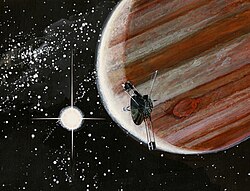Direct observation
Humans (Homo sapiens) have inhabited the Earth in the last 300,000 years at least, [1] and they had witnessed directly observable astronomical and geological phenomena. For millennia, these have arose admiration and curiosity, being admitted as of superhuman nature and scale. Multiple imaginative interpretations were being fixed in oral traditions of difficult dating, and incorporated into a variety of belief systems, as animism, shamanism, mythology, religion and/or philosophy.
Although such phenomena are not "discoveries" per se, as they are part of the common human experience, their observation shape the knowledge and comprehension of the world around us, and about its position in the observable universe, in which the Sun plays a role of outmost importance for us. What today is known to be the Solar System was regarded for generations as the contents of the "whole universe".
The most relevant phenomena of these kind are:
- Basic gravity. Following the trajectory of free falling objects, the Earth is "below" us and the sky is "above" us.
- Characterization of the terrestrial surface, in four main types of terrain: lands covered with vegetation; dry deserts; bodies of liquid water, both salted (seas and oceans) and fresh (rivers and lakes); and frozen landscapes (glaciars, polar ice caps). Recognition of emerged lands and submerged ones. Recognition of mountain ranges and cavities (grottos and caverns).
- Characterization of the Earth's atmosphere and its associated meteorological phenomena: clouds, rain, hail and snow; wind, storms and thunderstorms, tornadoes and hurricanes/cyclones/typhoons; fluvial floods, deluges, landslides and avalanches; rainbows and halos; mirages; glacial ages.
- Diurnal apparent movement of the Sun: sunrise, noon and sunset. Recognition of the four cardinal points: north, south, east, and west.
- Nightly apparent movement of the celestial sphere with its main features regarded as "fixed": stars, the brightest of them forming casual groupings known as constellations, under different names and shapes in many cultures. Different constellations are viewed in different seasons and latitudes. Along with the faint strip of the Milky Way, they altogether conform the idea of the firmament, which as viewed from Earth it seems to be a consistent, solid unit rotating smooth and uniformly. This leads to the intuitive idea of a geocentric universe.
- Presence of the Moon, with its phases. Tides. Recognition of meteorological phenomena as sub-lunar.
- Yearly apparent transit of the Sun through the constellations of the zodiac. Recognition of the lunar cycle as a (lunar) month, and the solar cycle as the (solar) year, the basis for calendars.
- Observation of non-fixed or "wandering" objects in the night sky: the five classical planets; shooting stars and meteor showers; bolides; comets; auroras; zodiacal light.
- Solar and lunar eclipses. Planetary conjunctions.
- Identification of the frigid, temperate and torrid zones of the Earth by latitude. Equator and Tropics. Four seasons in temperate zones: spring, summer, autumn and winter. Equinoxes and solstices. Monsoons. Midnight sun.
- Telluric phenomena: seismic (earthquakes and seaquakes; tsunamis). Geysers. Volcanoes.
Along with an indeterminate number of unregistered sightings of rare events: meteor impacts; novae and supernovae.
This page is based on this
Wikipedia article Text is available under the
CC BY-SA 4.0 license; additional terms may apply.
Images, videos and audio are available under their respective licenses.




















